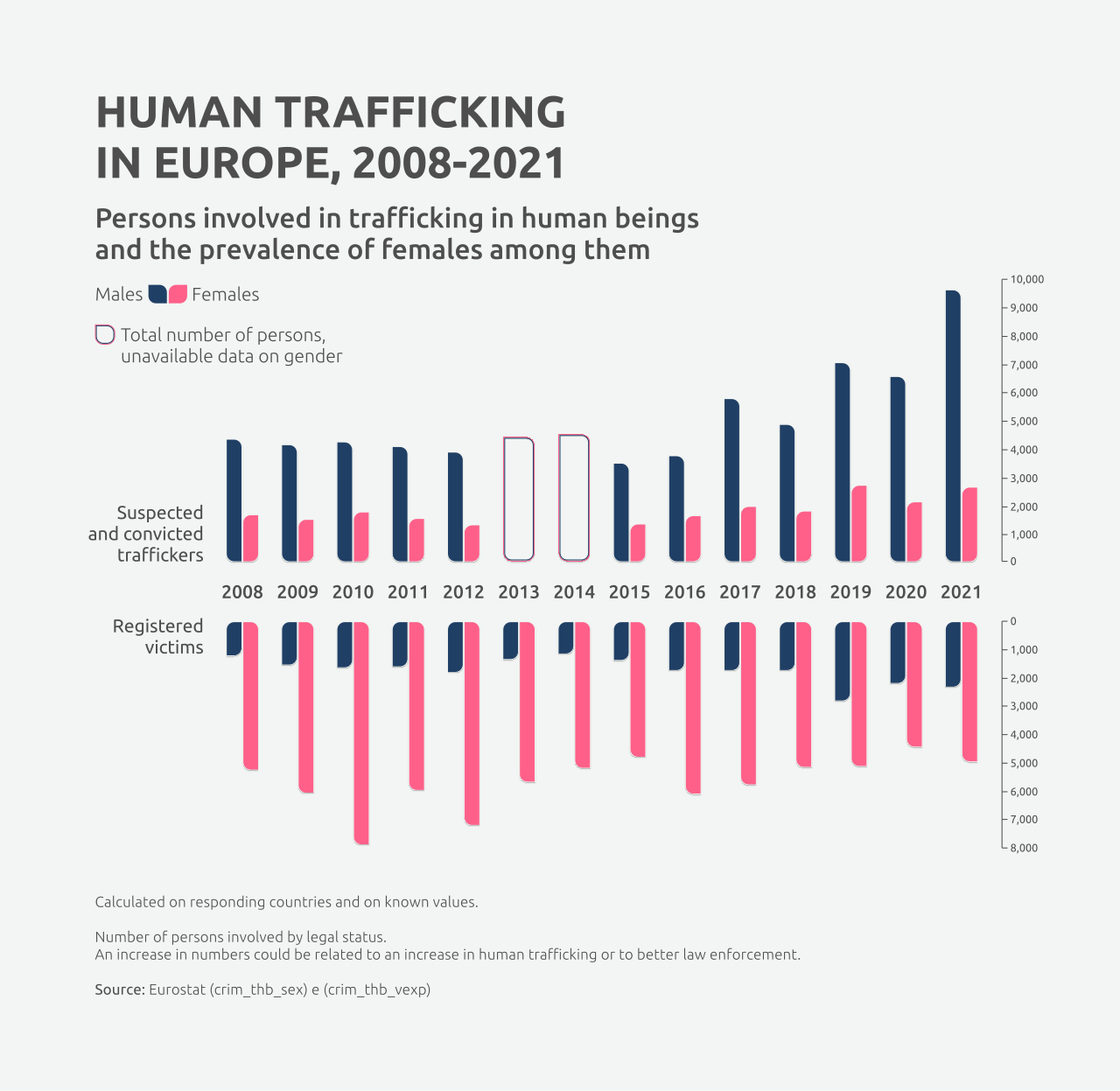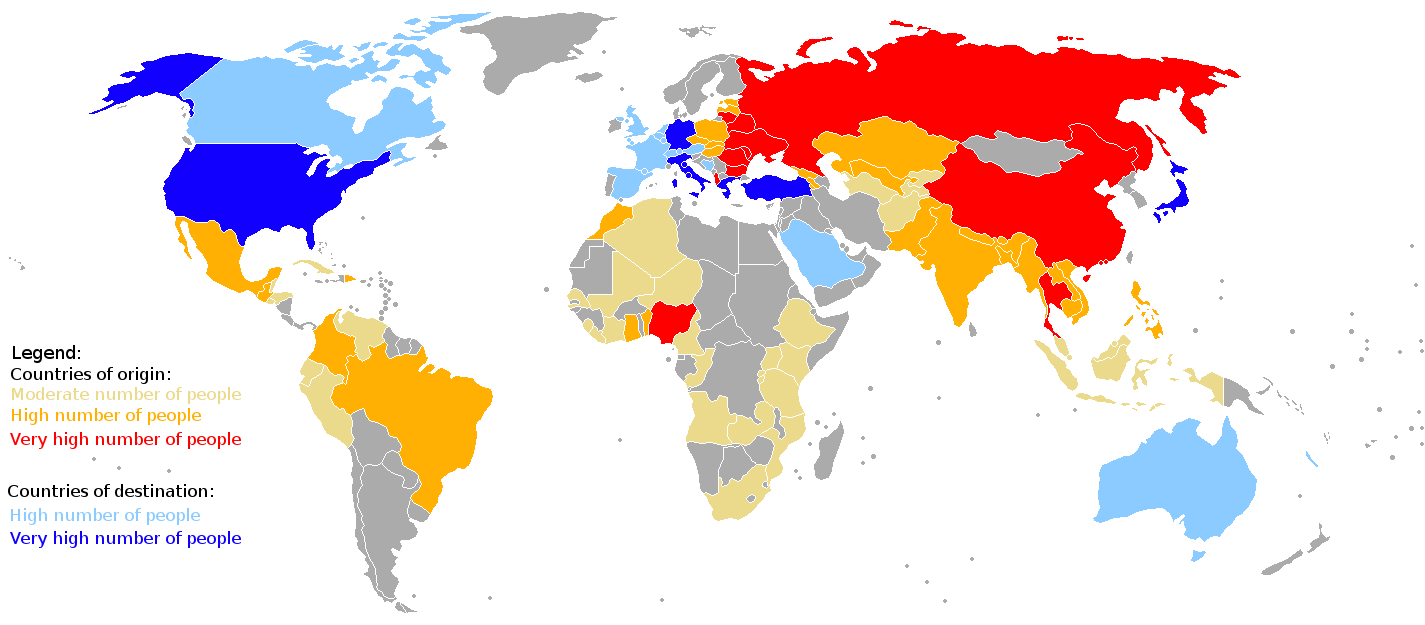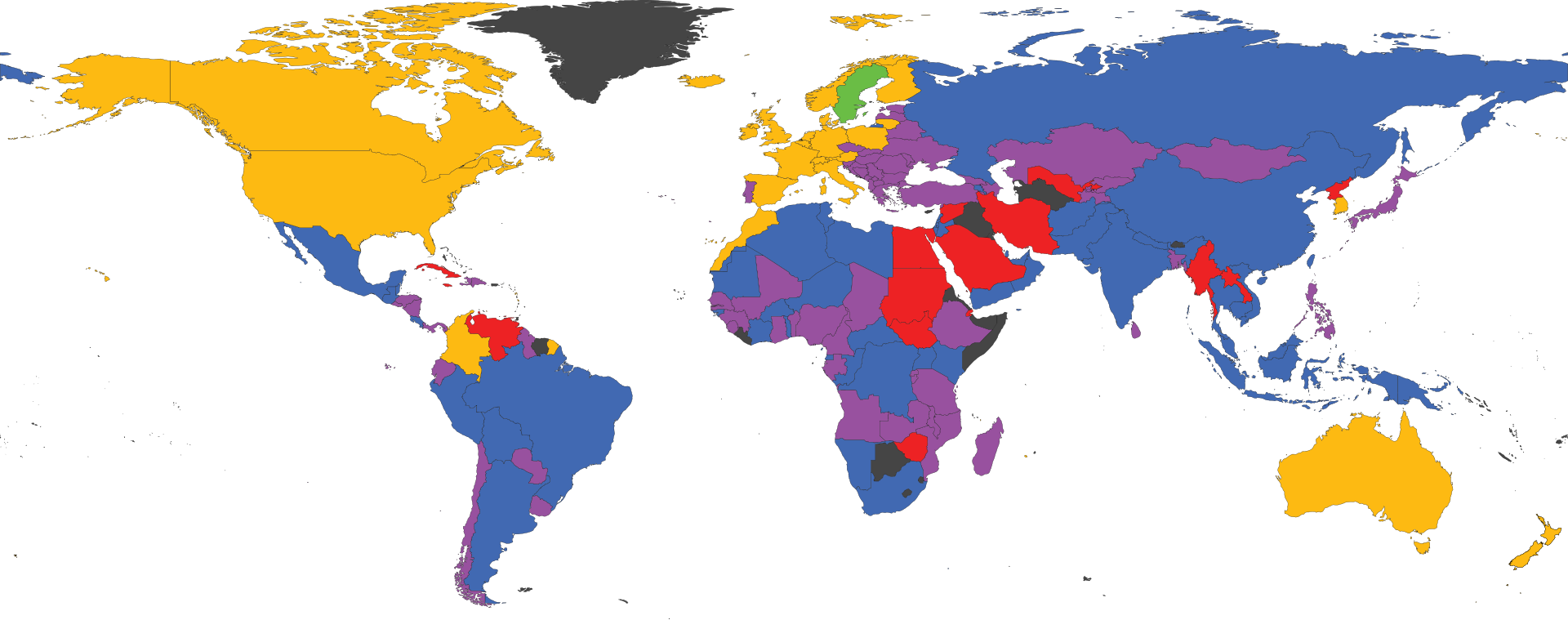
人身売買問題への解法の技法
How to tackle with human trafficking problems

人身売買(human trafficking)問題への解法の技法
人身売買(human trafficking)の定義:人身売買とは、人間の身体が再生産労働や サービス労働に寄与できることを前提にした、不当な身体と貨幣の交換行為のことをさす。
| Human trafficking
is the act of recruiting, transporting, transferring, harboring, or
receiving individuals through force, fraud, or coercion for the purpose
of exploitation. This exploitation may include forced labor, sexual
slavery, or other forms of commercial sexual exploitation. It is
considered a serious violation of human rights and a form of modern
slavery. Efforts to combat human trafficking involve international
laws, national policies, and non-governmental organizations. [1][2] Human trafficking can occur both within a single country or across national borders. It is distinct from people smuggling, which involves the consent of the individual being smuggled and typically ends upon arrival at the destination. In contrast, human trafficking involves exploitation and a lack of consent, often through force, fraud, or coercion. Human trafficking is widely condemned as a violation of human rights by international agreements such as the United Nations Protocol to Prevent, Suppress and Punish Trafficking in Persons. Despite this condemnation, legal protections and enforcement vary significantly across countries. Globally, millions of individuals, including women, men, and children, are estimated to be victims of human trafficking, enduring forced labor, sexual exploitation, and other forms of abuse.[3][4] |
人身売買とは、搾取を目的として、強制、詐欺、または強要により、個人
を募集、移送、譲渡、保
管、または受け入れる行為のことである。この搾取には、強制労働、性的奴隷、その他の商業的性的搾取が含まれる。人身売買は深刻な人権侵害であり、現代の
奴隷制の一形態と考えられている。人身売買を撲滅するための取り組みには、国際法、国民政策、非政府組織が関与している。[1][2] 人身売買は、一国内で発生することもあれば、国境を越えて発生することもある。人民密輸とは異なり、密輸される人々の同意が必要であり、通常、目的地に到 着した時点で終了する。これとは対照的に、人身売買は搾取と同意の欠如を伴い、多くの場合、強制、詐欺、強要によって行われる。人身売買は、国連の「人身 売買を防止し、抑止し及び処罰するための議定書」などの国際協定によって、人権の侵害として広く非難されている。このように非難されているにもかかわら ず、法的保護と執行は国によって大きく異なる。世界全体では、女性、男性、子どもを含む数百万人が人身売買の犠牲になっていると推定され、強制労働、性的 搾取、その他の形態の虐待に耐えている[3][4]。 |
| Definition World Day Against Trafficking In Persons The UN Protocol to Prevent, Suppress and Punish Trafficking in Persons, Especially Women and Children, which has 117 signatories and 173 parties,[5] defines human trafficking as: (a) [...] the recruitment, transportation, transfer, harbouring or receipt of persons, by means of threat or use of force or other forms of coercion, of abduction, of fraud, of deception, of the abuse of power or of a position of vulnerability or of the giving or receiving of payments or benefits to achieve the consent of a person having control over another person, for the purpose of exploitation. Exploitation shall include, at a minimum, the exploitation or the prostitution of others or other forms of sexual exploitation, forced labour or services, slavery or practices similar to slavery, servitude or the removal, manipulation or implantation of organs; (b) The consent of a victim of trafficking in persons to the intended exploitation set forth in sub-paragraph (a) of this article shall be irrelevant where any of the means set forth in subparagraph (a) have been used; (c) The recruitment, transportation, transfer, harbouring or receipt of a child for the purpose of exploitation shall be considered "trafficking in persons" even if this does not involve any of the means set forth in sub-paragraph (a) of this article; (d) "Child" shall mean any person under eighteen years of age.[6][7] |
定義 人身取引反対世界デー 人身売買、特に女性と子どもの人身売買を防止し、抑止し、処罰するための国連議定書は、117の署名国と173の締約国[5]を有し、人身売買を次のように定義している: (a) [...] 搾取を目的として、威嚇または武力その他の強制の行使、拉致、詐欺、欺罔、権力または脆弱な地位の濫用、または他人を支配する者の同意を得るための支払い または便益の授受によって、人を募集し、移送し、移転し、または収容すること。搾取には、少なくとも、他人の搾取もしくは売春、その他の形態の性的搾取、 強制労働もしくは強制役務、奴隷制もしくは奴隷制に類似する慣行、隷属または臓器の摘出、操作もしくは移植を含むものとする; (b) 本条(a)号に掲げるいずれかの手段が用いられた場合には、本条(a)号に掲げる意図的な搾取に対する人身取引の被害者の同意は、問わない; (c) 搾取を目的とする児童の募集、輸送、移送、蔵匿又は受領は、本条(a)号に掲げる手 段を用いない場合であっても、「人身取引」とみなす; (d) 「児童」とは、18 歳未満の人格をいう[6][7]。 |
| Prevalence There are many different estimates of the number of victims of human trafficking.  Diagram showing number of persons involved in human trafficking by legal status, divided by gender. [1] According to the Global Estimates (2021), an estimated amount of 50 million people are living in "modern-day slavery" across the globe. [8] Women and children continue to make up the majority of victims worldwide. Child victims are increasingly detected globally; The United Nations Global Report on Trafficking in Persons (2024) estimates around 38% of trafficking victims to be boys and girls. [9] In 2024, the U.S. Department of State estimates that 2 million children are exploited by the global commercial sex trade.[10] In the same year, a study classified 14 million individuals worldwide as "forced laborers, bonded laborers or sex-trafficking victims". Approximately 2 million of these individuals are children working as commercial sex slaves, with women and girls comprising 98% of that 2 million.[11] According to the International Labour Organization (ILO), forced labour alone (one component of human trafficking) generates an estimated $150 billion in profits per annum as of 2014.[12] In 2012, the ILO estimated that 21 million victims are trapped in modern-day slavery. Of these, 14.2 million (68%) were exploited for labour, 4.5 million (22%) were sexually exploited, and 2.2 million (10%) were exploited in state-imposed forced labour.[13] The following is the breakdown of profits by sector: $99 billion from commercial sexual exploitation; $34 billion in construction, manufacturing, mining and utilities; $9 billion in agriculture, including forestry and fishing; $8 billion is saved annually by private households that employ domestic workers under conditions of forced labour. Although only 19% of victims are trafficked for sexual exploitation, it makes up 66% of the global earnings of human trafficking.[14] The average annual profits generated by each woman in forced sexual servitude ($100,000) is estimated to be six times more than the average profits generated by each trafficking victim worldwide ($21,800).[14] Human trafficking is the third largest crime industry in the world, behind drug dealing and arms trafficking, and is the fastest-growing activity of transnational criminal organizations.[15][16][17] In January 2024, UNODC published the new edition of the Global Report on Trafficking in Persons.[18] The report reveals that 38% of all victims of human trafficking detected globally between 2020 and 2023 were children, with girls accounting for 22% and boys for 16% of all detected victims. This marks a 31% increase in child detections since 2019, with a sharper 38% increase among girls. The report documented victims of at least 162 different nationalities, detected in 128 countries, with 31% of all cross-border flows involving African victims—making Africa the region with the most internationally trafficked victims. Around half of all trafficking took place within the same region with 42% occurring within national borders. One exception is the Middle East, where most detected victims are East and South Asians. Trafficking victims from East Asia have been detected in more than 64 countries, making them the most geographically dispersed group around the world. There are significant regional differences in the detected forms of exploitation. Countries in Africa and in Asia generally intercept more cases of trafficking for forced labour, while sexual exploitation is somewhat more frequently found in Europe and in the Americas. Around 74% of traffickers operated within organized crime groups, especially in business- and governance-type structures, while 42% of trafficking occurred for forced labour, which has now surpassed sexual exploitation (36%) as the most common form. Notably, trafficking for organ removal was detected in at least 1% of cases, detected in 16 countries around the world. While significant progress has been made in legislation—with most countries having trafficking laws aligned with the UN Protocol—the report continues to raise concern about criminal justice outcomes: only 17% of global convictions in 2022 were for forced labour, despite its rise, and men made up 70% of convicted traffickers, with women comprising 28%.[19] |
有病率 人身売買の被害者数については、さまざまな推計がある。  人身売買に関与した人格を法的地位別に性別に分けた図。[1] 世界推計(2021年)によると、世界中で推定5,000万人の人々が「現代の奴隷状態」で生活している。[8]女性と子どもは、世界的に被害者の大多数 を占め続けている。ナショナリズムの『人身取引に関する世界報告』(2024年)は、人身取引被害者の約38%が少年少女であると推定している。[9] 2024年、米国国務省は、200万人の子どもが世界の商業的性取引によって搾取されていると推定している[10]。 同年、ある調査は、世界で1,400万人を「強制労働者、拘束労働者、性犯罪被害者」に分類した。このうち約200万人が商業的性奴隷として働く子どもた ちで、女性と女児がその200万人の98%を占めている[11]。 国際労働機関(ILO)によれば、強制労働(人身売買の一要素)だけでも、2014年時点で年間1500億ドルの利益を生み出していると推定されている [12]。2012年、ILOは2100万人の被害者が現代の奴隷状態に陥っていると推定した。そのうち1420万人(68%)が労働のために搾取され、 450万人(22%)が性的搾取を受け、220万人(10%)が国家による強制労働で搾取されている[13]。部門別の利益の内訳は、商業的性的搾取で 990億ドル、建設、製造、鉱業、公益事業で340億ドル、林業や漁業を含む農業で90億ドル、強制労働の条件で家事労働者を雇用する個人家庭で年間80 億ドルが節約されている。性的搾取のために人身売買される被害者は被害者の19%に過ぎないが、人身売買の世界的収益の66%を占めている[14]。 強制的な性的隷属状態にある女性1人あたりが生み出す年間平均利益(10万ドル)は、世界の人身売買被害者1人あたりが生み出す平均利益(2万1800ド ル)の6倍と推定されている[14]。 人身売買は、麻薬取引、武器取引に次いで世界で3番目に大きな犯罪産業であり、国際犯罪組織の活動として急成長している[15][16][17]。 2024年1月、UNODCは「人身取引に関する世界報告書」の新版を公表した[18]。 同報告書によれば、2020年から2023年にかけて世界全体で検知された人身取引被害者の38%が子どもであり、検知された被害者全体の22%が女児、 16%が男児であった。これは2019年以降、子どもの摘発が31%増加したことを意味し、女児では38%の増加がより顕著であった。報告書は、128カ 国で発見された少なくとも162の異なる国籍の被害者を記録しており、国境を越えた流れの31%がアフリカの被害者であり、アフリカは最も国際的な人身売 買の被害者が多い地域となっている。 人身売買の約半数は同じ地域内で行われ、42%は国境内で発生している。例外は中東で、被害者のほとんどが東アジアと南アジア人である。東アジアからの人 身売買被害者は64カ国以上で発見されており、世界で最も地理的に分散したグループとなっている。摘発された搾取の形態には地域差が大きい。アフリカとア ジアの国々では一般的に強制労働を目的とした人身売買が多く、ヨーロッパと南北アメリカでは性的搾取がやや多い。 人身売買の約74%は、組織犯罪グループ、特にビジネスや統治型の組織内で行われており、人身売買の42%は強制労働のために行われ、性的搾取(36%) を抜いて最も一般的な形態となっている。特筆すべきは、臓器摘出を目的とした人身売買が少なくとも1%のケースで検出され、世界16カ国で検出されたこと である。ほとんどの国が国連議定書に沿った人身売買法を制定するなど、法整備は大きく進展しているが、報告書(UNODC「人身取引に関する世界報告 書」)は刑事司法の結果について引き続き懸念を示している。2022年の世界全体の有罪判決のうち、強制労働によるものはわずか17%であり、その増加に もかかわらず、有罪判決を受けた人身売買者の70%は男性であり、女性は28%であった[19]。 |
Overview A schematic showing global human trafficking from countries of origin and destination Countries of origin Yellow: Moderate number of people Orange: High number of people Red: Very high number of people Countries of destination Light blue: High number of people Blue: Very high number of people Unshaded countries are neither countries of origin nor countries of destination  A world map showing the legislative situation in different countries to prevent female trafficking as of 2009 according to WomanStats Project. Gray: No data Green: Trafficking is illegal and rare Yellow: Trafficking is illegal but problems still exist Purple: Trafficking is illegal but is still practiced Blue: Trafficking is limitedly illegal and is practiced Red: Trafficking is not illegal and is commonly practiced[20] According to the 2018 through 2024 editions of the annual Trafficking in Persons Reports issued by the United States Department of State: Belarus, Iran, Russia, and Turkmenistan continue to remain among the worst countries when it comes to protecting against human trafficking and forced labour. These nations remain on Tier 3—the lowest ranking—due to inadequate efforts to meet minimum standards for eliminating trafficking.[21][22] In 2024, the National Human Trafficking Hotline received approximately 2,000 reports of potential human trafficking cases in the U.S. Estimates suggest that about 24,000 individuals were victims of trafficking nationwide, with approximately 75% being women and 40% minors.[23][24][25] Singapore remains a destination for human trafficking, particularly involving women and girls from countries such as India, Thailand, the Philippines, and China. In 2024, reports indicated that victims are often lured under false pretenses and coerced into sex work in venues like KTV lounges, massage parlors, and even makeshift forest brothels. In November 2019, two Indian nationals were convicted for exploiting migrant women, making it the first conviction in the state.[26] In the 21st century, trafficking in persons continues to thrive, particularly where armed conflicts, economic recession, health emergencies, food insecurity, climate change-induced disasters and other humanitarian crises exacerbate existing underlying vulnerabilities.[27] |
概要 世界の人身売買を、発生国と目的国から示した略図である。 原産国 黄色: 中程度の人々 オレンジ色 人民の数が多い。 赤 非常に多くの人々 渡航先の国 水色 人民が多い 青: 非常に多くの人々 網掛けされていない国は、出身国でも目的地でもない。  WomanStats Projectによると、2009年現在、女性の人身売買を防止するための各国の立法状況を示す世界地図。 灰色:データなし 緑: 人身売買は違法であり、まれである。 黄色: 人身売買は違法だが、問題はまだ存在する 紫色: 人身売買は違法だが、まだ行われている 青: 人身売買は限定的に違法であり、行われている。 赤:人身売買は違法ではなく、一般的に行われている[20]。 米国国務省が毎年発行している「人身取引報告書」の2018年から2024年版によると、ベラルーシ、イラン、ロシアは人身取引を行っている: ベラルーシ、イラン、ロシア、トルクメニスタンは、人身売買や強制労働からの保護に関して、引き続き最悪の国のひとつである。これらの国民は、人身売買を 消去するための最低基準を満たす努力が不十分なため、最低ランクであるティア3にとどまっている[21][22]。 2024年、ナショナリズム・ホットラインは、米国内で人身売買の可能性があるという報告を約2,000件受けている。推計によれば、全国で約24,000人が人身売買の被害者であり、約75%が女性、40%が未成年者であった[23][24][25]。 シンガポールは依然として人身売買の目的地であり、特にインド、タイ、フィリピン、中国といった国々からの女性や少女が関与している。2024年の報告に よれば、被害者はしばしば偽りの口実で誘い出され、KTVラウンジ、マッサージパーラー、さらにはその場しのぎの森の売春宿のような場所で性労働を強要さ れている。2019年11月、2人のインディアン国民が移民女性を搾取したとして有罪判決を受け、同州で初の有罪判決となった[26]。 21世紀に入っても、特に武力紛争、経済不況、保健上の緊急事態、食糧不安、気候変動による災害、その他の人道危機が既存の根本的な脆弱性を悪化させる場合、人格の人身売買が盛んに行われている[27]。 |
| Types of trafficking |
人身売買などのタイプ(以下、省略) |
| https://en.wikipedia.org/wiki/Human_trafficking |
☆練習問題:
人身売買問題について、ここでは3つの観 点から考えよう。すなわち。
___________________
1)地政学的観点
2)人身売買にかかわるアクターの観点
3)人身売買を制御する法システムという 観点
___________________
1)地政学的観点
国際的な人身売買の搬送ルートは、大きく(a)送出国、(b)中継国、(c)受入国という地域(ゾーン)を経由する。それらの地域に関する 論点は、この3地域の固有の問題を考えるほかに、3つの地域の組み合わせ、すなわち(d)送出国=中継国、(e)中継国=受入国、(f)送出国=受入国、 そして(g)送出国=中継国=受入国の組み合わせのセットで考えなければならない。
(d)送出国=中継国、(e)中継国=受入国、(f)送出国=受入国、そして(g)送出国=中継 国=受入国
| マッチング | (a)送出国 | (b)中継国 | (c)受入国 |
| (a)送出国 | (A) | (d)送出国←中継国 | (g)送出国←中継国←受入国 |
| (b)中継国 | (d)送出国→中継国 | (B) | (e)中継国←受入国 |
| (c)受入国 | (g)送出国→中継国→受入国 | (e)中継国→受入国 | (C) |
2)人身売買にかかわるアクターの観点
人身売買にかかわるアクター(主体)という観点からは、加害者(=人身売買で不当な利益を得る人)、被害者(=人身売買の被害者)、ステイ クホルダー(=人身売買により恩恵を受けたり、逆に間接的に被害に遭う人)、そして市民(人身売買に直接関与しないが、それがおこる所で生活するすべての 人びと)にわけられるだろう。人身売買の問題点を洗い出すには、これらのアクターのすべての水準に関わったり、呼びかける制度(社会的啓蒙やエンパワメン ト/ディス・パワメント?/教育/態度変容など)を考えるべきだろう。
3)人身売買を制御する法システムという 観点
人身売買は人道に対する罪であるが、国際条約の批准や、仮に批准しても国内法の整備にはタイムラグがあったり、国際間での不協和というもの がある。その際には国際的な調整が必要になるが、まずは、国内の法整備が最重要課題になる。犯罪との戦いは、それを犯罪だと見なさない偏見や無理解との戦 いでもある。また処罰の重軽についての国民の合意の調整が困難になることもある。また法は整備されても、実際に実行されなれけば社会的効力をもたない。き ちんとした法手続による処罰の実行、防止や、啓蒙なども重要な課題となる。
href="121028foreignLabor.html">古代ローマの奴隷制から考える外国人労働問題リンク
文献
その他の情報
Copyleft, CC, Mitzub'ixi Quq Chi'j, 1996-2099
+++
Copyleft,
CC, Mitzub'ixi Quq Chi'j, 1996-2099